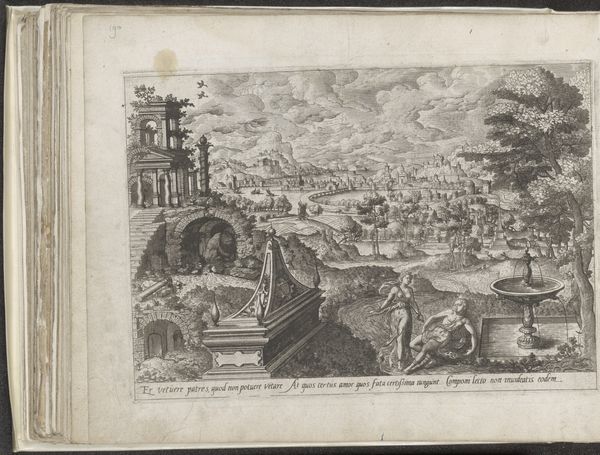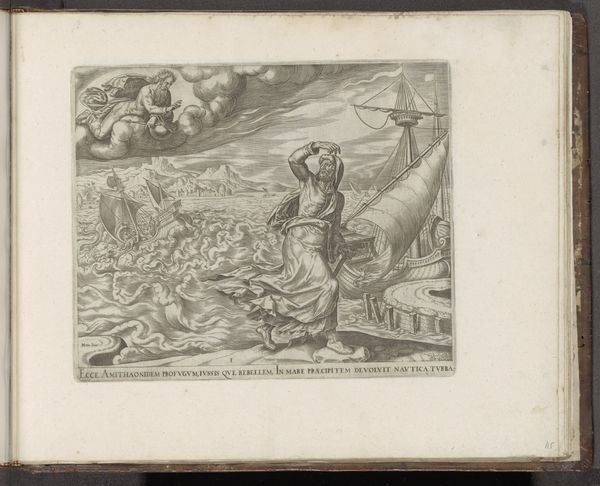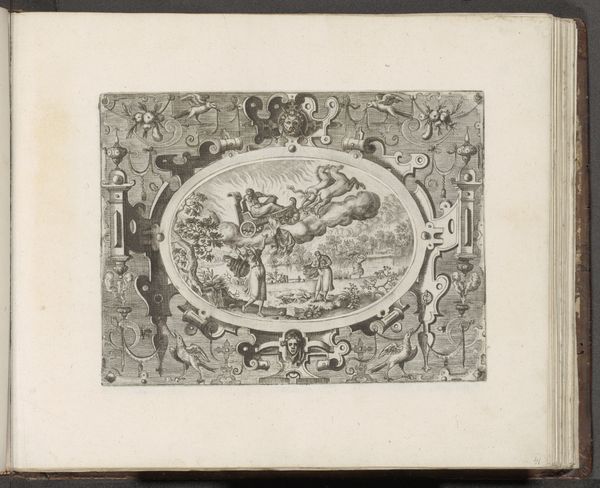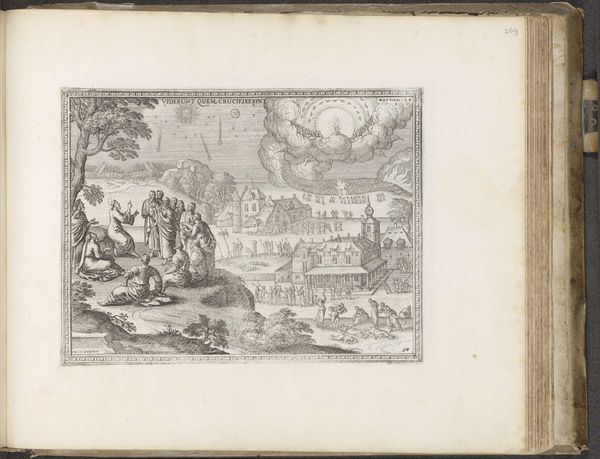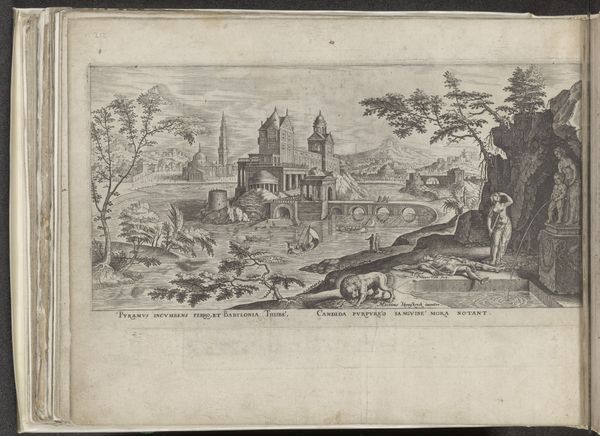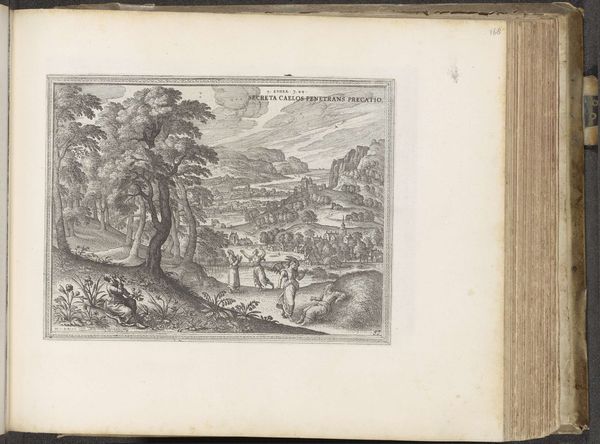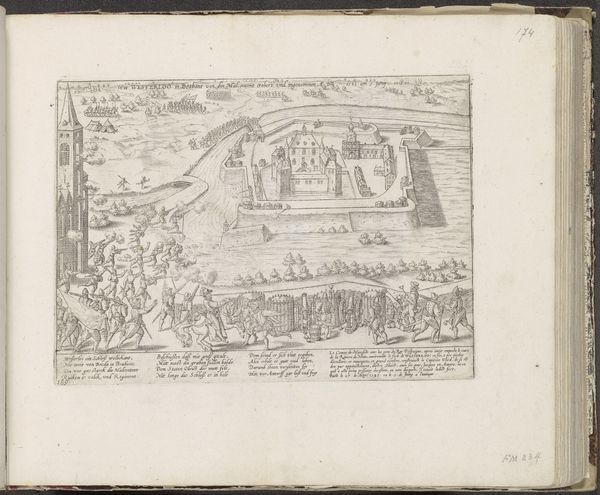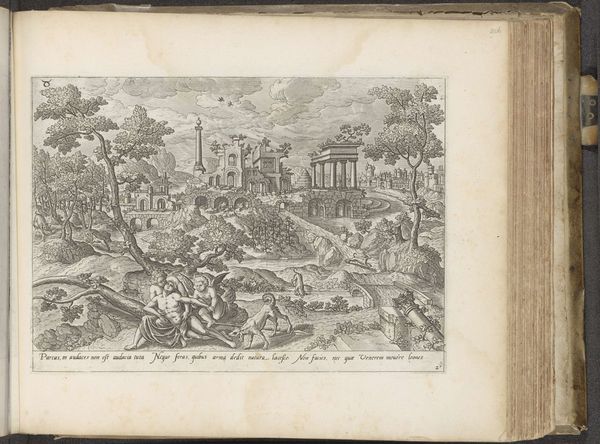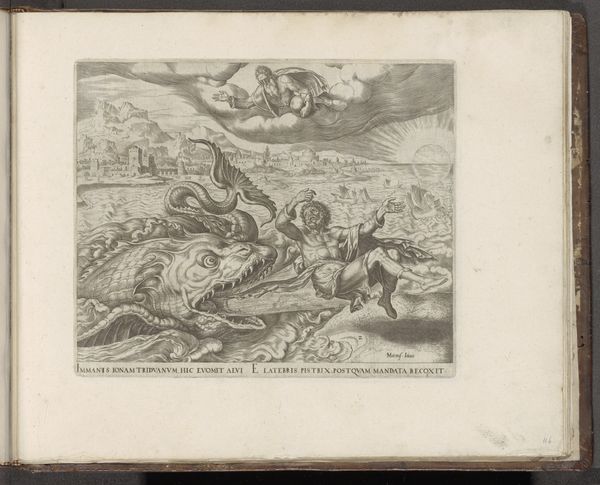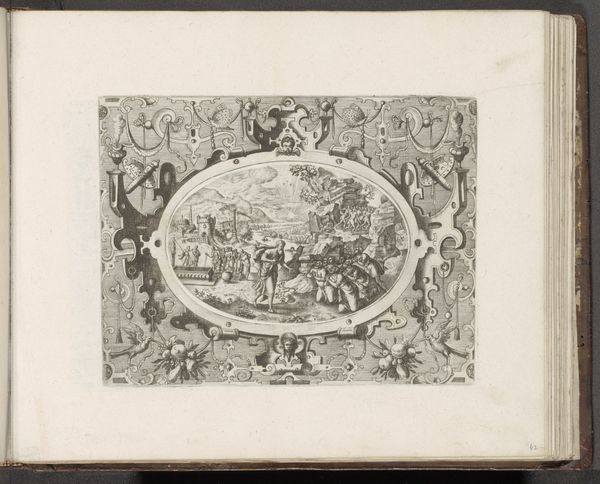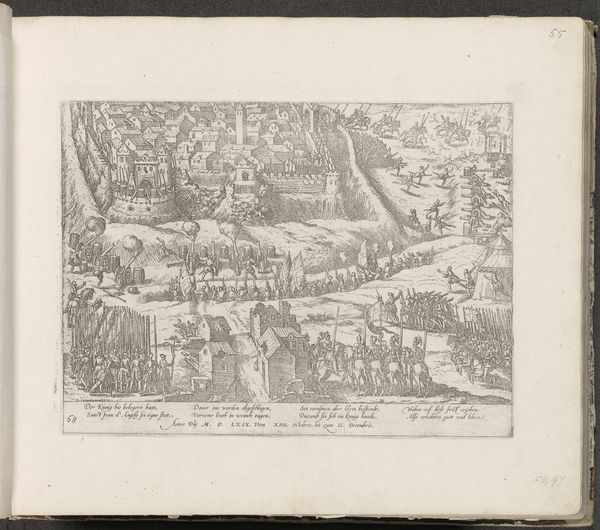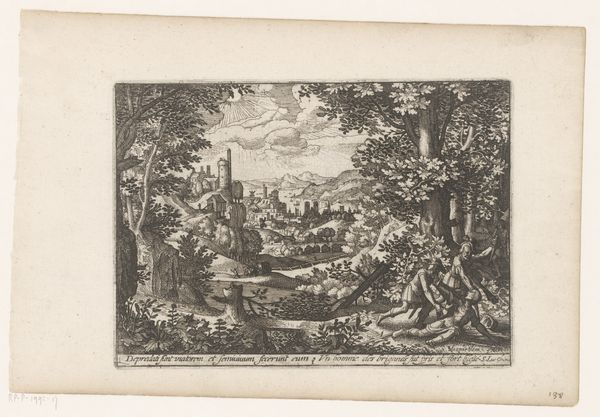
print, engraving
#
ink paper printed
# print
#
landscape
#
figuration
#
coloured pencil
#
line
#
cityscape
#
history-painting
#
northern-renaissance
#
engraving
Dimensions: height 205 mm, width 247 mm
Copyright: Rijks Museum: Open Domain
Editor: Here we have Philips Galle's engraving, "Jonah under the Ivy," dating from the late 16th century. There's such a contrast between the pensive figure of Jonah in the foreground and the bustling city of Nineveh in the background, not to mention the deity looming above. What stands out to you in this piece? Curator: For me, the most compelling aspect is how this print participates in the evolving visual rhetoric of religious and political power during the Northern Renaissance. The print was made and circulated amidst the turbulent times of the Reformation. Images like this became crucial tools. Consider the placement of God hovering above the city, literally overseeing Nineveh; it's a clear visual assertion of divine authority. How do you think the public, during this period of religious upheaval, might have interpreted such an image? Editor: I see your point. It's not just a simple biblical illustration, is it? Perhaps it served as a reminder of God's power and the consequences of defying it, especially with all that urban hustle suggesting worldly temptations. Curator: Precisely. Furthermore, the artist cleverly uses the then-popular cityscape to enhance this message. Think about it. The very act of depicting the city in such detail lends credence to its existence and therefore the narrative's authenticity. It situates the biblical tale within a seemingly tangible, almost contemporary reality, right? How does that affect the viewer? Editor: So, by visualizing Nineveh as a plausible place, Galle encourages the viewer to consider the relevance of Jonah's story to their own world. Interesting. Curator: Exactly! Images had a very important public role during that period. The engraving served to shape and reinforce beliefs. Ultimately, a work like this prompts us to reflect on the enduring power of images to influence thought and action within particular social contexts. Editor: I never considered the socio-political function so directly before. It really changes how I see this print. Curator: And for me, considering your insights is a good reminder of the ways in which even devotional works were shaped by worldly factors like art market conditions and early notions of "authorship" among printmakers. Thanks!
Comments
No comments
Be the first to comment and join the conversation on the ultimate creative platform.
